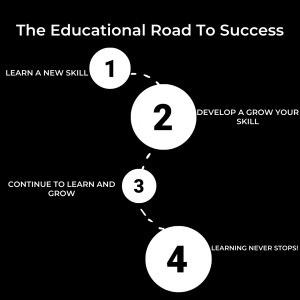Scholarship Opportunities for Students: Discover Your Path to Financial Support
Many students face the burden of college costs, making scholarship opportunities a crucial part of funding their education. College scholarships can provide significant financial aid and often do not require repayment, making them an excellent source of free money for students seeking to further their studies. Understanding the various types of scholarships available can open doors to educational experiences that might otherwise be out of reach.
From merit-based awards to need-based grants, the landscape of scholarship opportunities is diverse. They cater to various backgrounds, fields of study, and extracurricular achievements. By exploring these options, students can maximize their chances of securing the funding they need for a successful college education.
In addition to traditional scholarships, there are numerous lesser-known grants and competitions that students can tap into. Engaging with scholarship search platforms and resources can make a significant difference in identifying the right opportunities. With the right approach, students can significantly lessen their financial burden and focus more on their academic success.
Understanding Scholarship Basics
Scholarships play a vital role in helping students finance their education. Various types exist, each with distinct eligibility requirements and application processes. This section will clarify these key components.
Types of Scholarships
Scholarships are broadly categorized into several types based on criteria and funding sources. Below are some common categories:
- Merit-based Scholarships: Awarded based on academic achievements or talents.
- Need-based Scholarships: Designed to assist students with demonstrated financial need.
- Athletic Scholarships: Given to students who excel in sports as incentives to join college teams.
- Minority Scholarships: Targeted at underrepresented groups to promote diversity.
- Local Scholarships: Offered by community organizations, which may have fewer applicants, increasing chances of success.
- Exclusive Scholarships: Often provided by specific institutions or companies with unique eligibility criteria.
- No-essay Scholarships: Simpler applications that usually require only personal details or basic information.
Eligibility Requirements
Each scholarship type has unique eligibility criteria. Common factors include:
- Academic Performance: Many scholarships necessitate a minimum GPA or specific test scores.
- Financial Need: Need-based scholarships typically require FAFSA documentation.
- Extracurricular Involvement: Athletic and merit scholarships often consider participation in sports, clubs, or community service.
- Demographics: Minority scholarships may require applicants to belong to designated groups.
- Residency: Local scholarships often prioritize applicants from specific geographic areas.
Meeting eligibility requirements is crucial for applicants to qualify for potential awards. Students must carefully review them before applying.
Understanding the Application Process
Navigating the scholarship application process requires attention to detail. Key steps include:
- Researching Available Scholarships: Students should use online databases, school counselors, and community resources to identify suitable scholarships.
- Preparing Required Documentation: Common documents include transcripts, recommendation letters, and essays. Some scholarships may not require essays, simplifying the process.
- Submitting Applications: Adhering to deadlines is critical. Students should track submission dates and ensure all materials are complete.
- Following Up: After submission, applicants may need to check the status or provide further information if requested.
With organization and diligence, students can optimize their chances of receiving scholarship funds.
Preparing Your Application Materials
Effective application materials are crucial for standing out in the scholarship selection process. A well-crafted scholarship essay, a strong application form, and compelling letters of recommendation can significantly enhance a student’s chances of receiving funding.
Crafting a Winning Scholarship Essay
A scholarship essay should reflect the individual’s unique experiences, skills, and aspirations. It’s important to begin with a strong introduction that grabs attention. Clearly articulate personal achievements and how they relate to the scholarship’s purpose.
Using specific examples can illustrate dedication and potential. Students should highlight their extracurricular activities, talents, and interests. Always align the essay with the scholarship’s values. Tailor the conclusion to reaffirm interest and potential contributions.
Essentials of a Strong Application Form
The application form acts as an initial point of contact with the scholarship committee. Accuracy is essential; students must ensure all information is correct. This includes GPA, transcript details, and personal contact information. Presenting a well-structured résumé can further strengthen the application. It should list academic achievements, relevant experiences, and leadership roles. Clearly outline skills and interests that showcase fit for the scholarship. Any additional questions on the form should be answered thoughtfully and thoroughly.
Securing Letters of Recommendation
Letters of recommendation should come from individuals who can speak to the student’s abilities and character. Ideal recommenders include teachers, mentors, or employers familiar with the applicant’s work and dedication.
Requesting letters in advance allows recommenders to provide detailed endorsements. Provide them with relevant information, such as the scholarship’s focus and the student’s achievements. This context enables stronger, more personalized letters. Following up with a thank-you can also maintain positive relationships for future opportunities.
Maximizing Your Scholarship Potential
Identifying ways to enhance scholarship applications can significantly aid students. Focusing on extracurricular activities, thorough research, and financial planning can provide a comprehensive approach to securing funding.
Leveraging Extracurriculars and Personal Achievements
Students should highlight their extracurricular involvement and personal achievements in scholarship applications. Participation in clubs, sports, or volunteer work demonstrates commitment and leadership.
Key Activities to Consider:
- Clubs and Organizations: Membership or leadership roles in school clubs.
- Volunteer Work: Community service that shows dedication to helping others.
- Awards and Honors: Recognition received for academic or non-academic achievements.
Incorporating these elements into a personal statement can create a compelling narrative that differentiates an applicant from others. Each experience should be connected to personal growth or future goals.
Strategies for Scholarship Research
Conducting detailed scholarship research is crucial for finding appropriate opportunities. Utilizing multiple platforms enhances the likelihood of discovering options suited to specific needs.
Recommended Resources:
- Scholarships.com: A comprehensive database for various scholarship listings.
- College Board: Offers a scholarship search tool tailored to students’ profiles.
- Bold.org: Focuses on innovative scholarships that may not be widely advertised.
- Scholarship America: Provides tools and resources for finding scholarships.
Using search engines with specific keywords can yield targeted results. Students should keep track of application deadlines and requirements for each scholarship to manage their efforts effectively.
Financial Planning Beyond Scholarships
Understanding the financial landscape is essential for students. While scholarships help reduce costs, it is wise to consider other financial options.
Financial Avenues to Explore:
- Gift Aid: Grants and scholarships that do not need repayment.
- Student Loans: Borrowing options should be researched thoroughly; terms, interest rates, and repayment plans vary widely.
- Professional Associations: Many offer scholarships specific to their fields, which students can leverage.
In addition to exploring these resources, it’s also vital to be aware of scholarship displacement, a situation where a college reduces its own financial aid after an outside scholarship is awarded. Despite the time and effort invested in securing external funding, the financial benefit can sometimes be offset or even erased.
This can be disheartening for students and families who are working hard to piece together an affordable path to higher education. Fortunately, some institutions and states are taking steps to mitigate scholarship displacement by adopting policies that preserve the full value of external scholarships.
Being informed about a college’s approach to outside aid can make a meaningful difference when planning for costs. Asking questions, reviewing aid packages closely, and advocating for more transparent financial aid practices can help ensure scholarships serve their intended purpose.
Careful financial planning that takes all forms of aid into account, whether from scholarships, grants, or loans, can reduce long-term stress and help support a more stable academic journey.


